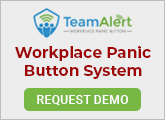School shootings are incredibly tragic and life-altering, although, thankfully, statistically rare. According to The Final Report of the Sandy Hook Advisory Commission, “There has never been an event in which an active shooter breached a locked classroom door.”
It’s important to carefully consider your options for securing your classrooms rather than purchasing cost-saving solutions that may provide a false sense of security or that may not be code compliant.
Components of an effective classroom security solution include the ability to secure the door from inside the room, solutions that meet adopted building codes, accessibility standards, and fire and life safety codes, and the ability to quickly and easily gain entry from outside the room by school personnel or first responders with keys, credentials, or other approved means.
In this article, we’ll look at the different types of locks and important considerations when choosing security devices for your classrooms.
Types of Classroom Locks, Functions and Applications
There are many factors to consider when choosing the best solution to secure your classrooms. Not only do you need to look at budget, understanding the various effective options available and the best applications is also an important consideration. The lock needs to be functional, appropriate for the type of door, and compliant with applicable codes and standards.
Many existing schools have the traditional classroom lock function; these were commonly used 20 years ago and prior. Although simple and cost-effective, recent events have led to new recommendations that classrooms should be able to lock from inside the room in cases of emergency. The traditional classroom lock function does not meet this need, as it requires teachers to step into the hall to lock the door from the outside.
Classroom locks should be able to be locked with a key from both sides of the door. This function is referred to as the classroom security function. The exterior side of the door can be locked from either side, while the inside lever still allows free egress. This also helps prevent unauthorized people from locking the door. However, this means that the key must be always readily accessible, especially for emergency lockdown.
Another option is the entrance/office function. The exterior side is controlled by a key and the interior side has a thumbturn or push-button lock function. This function still allows free egress. Unlike the classroom security function, the door can be locked by anyone from the inside. While more convenient in emergency situations, it may also open an opportunity for students to lock the door when they are not supposed to.
Storeroom function is arguably the most secure but has additional considerations. With this function, the latch is retracted from the exterior side of the door with a key and the interior has neither a keyhole nor turn or push button. This means that the door is locked 100% of the time when shut and a key must be used to unlock the door each time it’s opened from the outside.
This option means no action other than closing the door is needed in event of an emergency, however a teacher or other keyholder will need to unlock the door for access each time. While inconvenient, this may also create a more secure environment as the teacher must authorize each person to enter the classroom.
Of course, no matter the chosen function, locks should always be installed, used and maintained properly.
Security Indicators
In a lockdown emergency, quick visual reference of the door can save precious seconds. A security indicator shows if the door is locked. Some visual indicators use red and white text to easily tell the difference between locked and unlocked status, as well as be distinguishable for those that are color blind. Visual indicators can be added to existing locks and mount seamlessly with the lock and handle, providing convenient and familiar ease of use.
Barricade Devices
The immediate need to address classroom security—often within tight budgetary constraints—can sometimes lead to quick decisions like purchasing retrofit security devices that often do not comply with current building codes, fire codes and accessibility standards. Often called classroom barricade devices, these products may impede egress and may not be operable by small children or people with certain types of disabilities.
While barricade devices might seem like a less expensive way to secure classroom doors, they can pose more risks than benefits to students and teachers. Barricade devices generally do not meet Americans with Disabilities Act (ADA) or fire code regulations. The use of non-code-compliant security devices can delay or prevent building occupants from exiting and may deter authorized access. Staff and teachers must be able to quickly locate and install them.
This may be an issue in emergency lockdowns when there isn’t enough time to allow installation, or the teacher is not educated on proper use. When accessible to the wrong people, barricades can contribute to serious hazards such as bullying, harassment, or physical violence. Therefore, barricade devices are not recommended in schools.
Key Considerations
It’s important to consider each factor when choosing security devices for your school. In a perfect world, every school would have top-of-the-line, ultra-secure infrastructure. In reality, budget constraints can be a limit to school security. That shouldn’t mean sacrificing safety by choosing solutions that meet budget needs, but not your security needs.
In the same vein, code compliance is crucial to consider. The model codes and reference standards and National Association of State Fire Marshals (NASFM) have strict guidelines when it comes to best practices for school safety. Be sure that any security solution you choose checks off each requirement on the Classroom Door Checklist.
Finally, consider the best applications. You wouldn’t necessarily need the same type of lock on every door. A study room may not need to be as secure as a nurse’s office or a room used for the storage of sensitive documents. Each campus has its own set of unique security needs. Contact an Allegion security consultant to customize your classroom security solution.
This information is courtesy of Allegion, which specializes in security solutions that keep people safe and secure where they learn, work and visit. With more than 30 brands sold across the globe, Allegion specializes in security around the doorway and beyond: everything from residential and commercial locks, door closer and exit devices, steel doors and frames to access control and workforce productivity systems, us.allegion.com.






